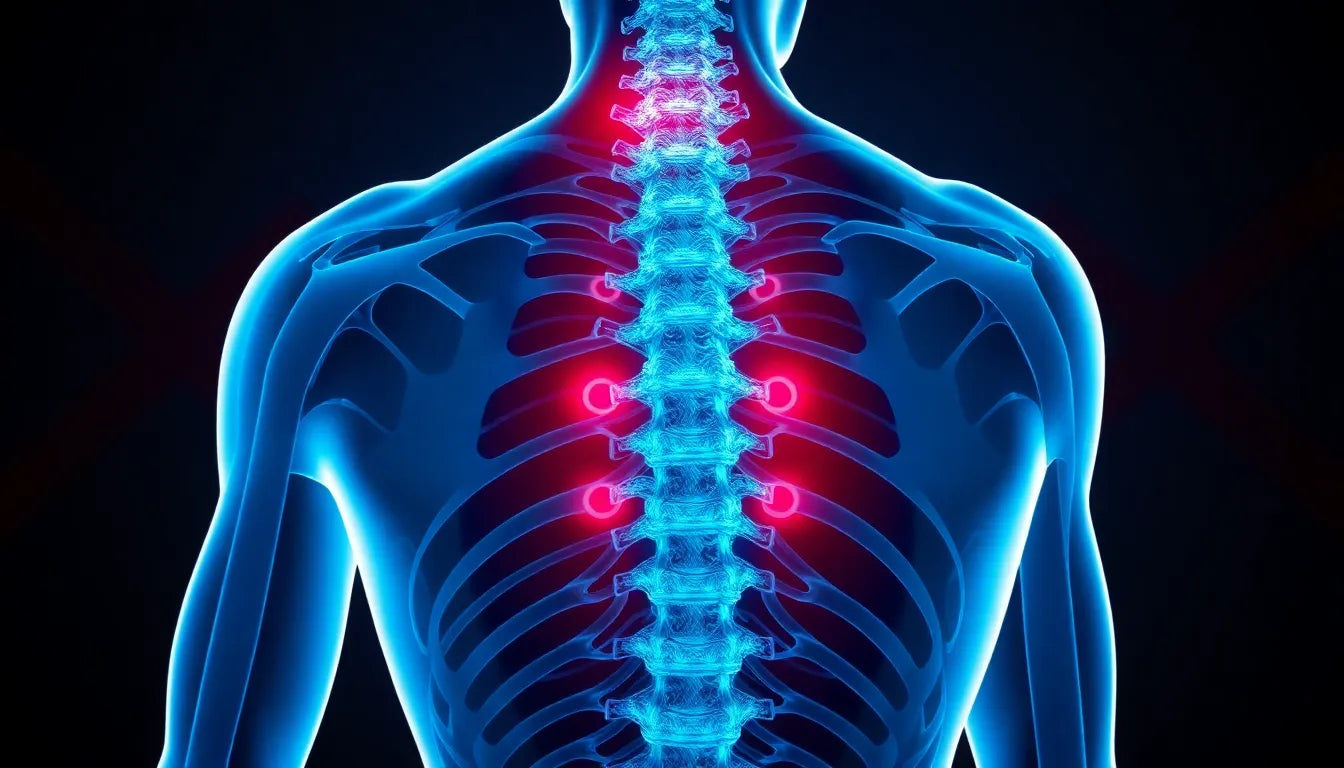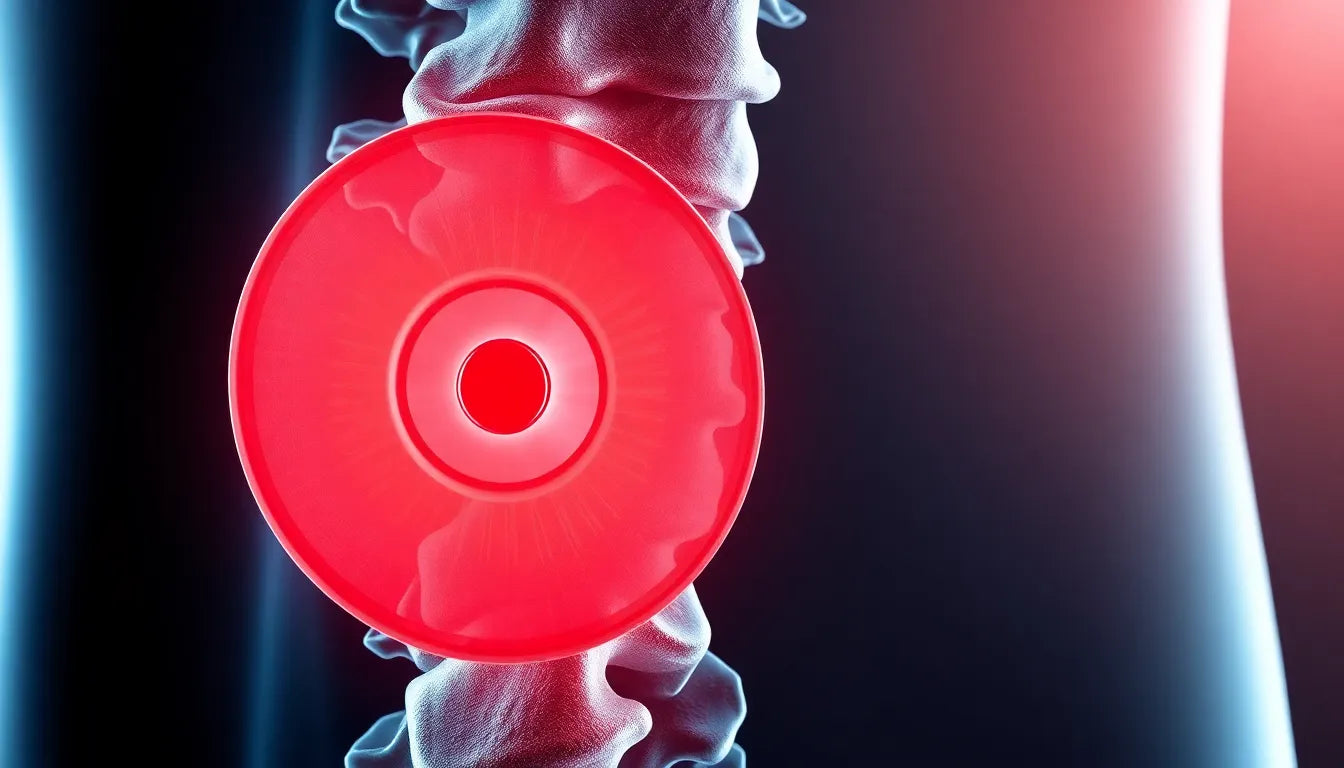When your beloved canine companion starts showing signs of discomfort, it can be both concerning and confusing. A common culprit behind such distress in dogs is a herniated disc, a condition that mirrors a similar affliction in humans. A herniated disc in dogs occurs when the cushioning discs between the vertebrae of the spine become displaced or rupture, leading to pain and potential mobility issues. This condition is particularly prevalent in certain breeds, such as Dachshunds, Beagles, and Bulldogs, due to their unique body structures.
Recognizing the importance of early detection
Detecting a herniated disc early on is crucial for effective treatment and a favorable prognosis. The sooner you identify the symptoms, the better the chances of managing the condition before it progresses to a more severe stage. Early intervention can prevent further damage to your dog's spinal cord and improve their quality of life significantly. In this post, we will delve into the symptoms to watch for, explore the various treatment options available, and discuss what you can expect in terms of prognosis and recovery.
Is your dog showing signs of a herniated disc?
Have you noticed your dog hesitating to jump or displaying signs of discomfort when engaging in activities they once enjoyed? These could be early signs of a herniated disc. Dogs with this condition may also exhibit an arched back, lowered head, stiffness in the neck or limbs, and even vocalize when touched. Recognizing these symptoms early can lead to more effective management and treatment, ensuring your furry friend remains happy and healthy.
Recognizing symptoms of a herniated disc in dogs
When it comes to identifying a herniated disc in dogs, understanding the range of symptoms is essential. These symptoms can vary in severity and may not always be immediately obvious. An arched back is a common sign, often accompanied by a lowered head, as your dog attempts to alleviate discomfort. Stiffness in the neck or limbs is another symptom, which can lead to a reluctance to move or participate in activities they once enjoyed. Shivering or trembling, even in warm conditions, may also indicate pain.
Dogs with herniated discs may vocalize when touched, signaling discomfort or pain. More severe symptoms include incoordination or weakness, which can manifest as a wobbly gait or difficulty walking. In some cases, dogs may drag their paws or show signs of paralysis or loss of sensation in the toes, indicating a more advanced stage of the condition.
Diagnosing the severity of a herniated disc
Veterinarians use a combination of physical exams and imaging techniques to diagnose a herniated disc in dogs. X-rays can help rule out other conditions, but an MRI is often required for a definitive diagnosis, as it provides a detailed view of the spinal cord and surrounding tissues. The severity of the condition is typically assessed using a grading scale from 1 to 5. Grade 1 indicates pain without other symptoms, while Grade 5 involves paralysis without sensation in the toes. This grading helps determine the appropriate treatment plan and provides insight into the potential prognosis.
Exploring treatment options for herniated discs in dogs
Treatment for a herniated disc in dogs can vary depending on the severity of the condition. Non-surgical treatments are often the first line of defense, especially for mild to moderate cases. These include strict cage rest to allow the spine to heal, along with pain management through medications such as anti-inflammatories and muscle relaxers. Physical therapy and rehabilitation can also play a crucial role in recovery, helping to strengthen the muscles and improve mobility.
In cases where non-surgical treatments are insufficient, surgical intervention may be necessary. Procedures such as hemilaminectomy, laminectomy, and fenestration are designed to relieve pressure on the spinal cord by removing or altering parts of the vertebrae. These surgeries can be highly effective, especially when performed early, and can significantly improve a dog's quality of life.
Real-life example of treatment success
Consider the story of Max, a seven-year-old Dachshund who began showing signs of a herniated disc. Max's owner noticed he was reluctant to jump onto the couch and seemed to be in pain when touched. After a visit to the veterinarian and an MRI, Max was diagnosed with a Grade 3 herniated disc. Initially, Max underwent a course of anti-inflammatory medication and strict cage rest. However, when his symptoms did not improve, the veterinary team recommended a hemilaminectomy. Post-surgery, Max participated in a tailored rehabilitation program, and within a few months, he was back to his playful self, enjoying his favorite activities without pain.
This example highlights the importance of early detection and the effectiveness of combined treatment approaches in managing herniated discs in dogs. By understanding the symptoms and seeking timely veterinary care, pet owners can help ensure their dogs receive the appropriate treatment, leading to a better prognosis and improved quality of life.
Prognosis and recovery for dogs with herniated discs
The prognosis for a dog with a herniated disc largely depends on the severity of the condition, the dog's age, and the chosen treatment method. Dogs diagnosed at an early stage, particularly those with mild symptoms, often have a favorable prognosis with appropriate management. For these dogs, non-surgical treatments can significantly improve their quality of life and mobility.
In more severe cases, particularly those requiring surgical intervention, the recovery process can be more complex. However, many dogs respond well to surgery, especially if the procedure is performed promptly. Post-operative care is crucial, involving strict rest, gradual reintroduction to activity, and possibly physical therapy. Monitoring for any signs of recurrence is also essential to ensure a full recovery and prevent further complications.
Prevention tips for herniated discs in dogs
Preventing herniated discs in dogs involves several proactive measures. Maintaining a healthy weight is crucial, as excess weight can place additional strain on a dog's spine. Providing a balanced diet rich in nutrients supports overall health and can help prevent conditions that may predispose a dog to spinal issues.
Exercise is important but should be moderate and appropriate for the dog's breed and age. Activities that involve excessive jumping or twisting should be minimized, especially for breeds known to be predisposed to herniated discs. Regular veterinary check-ups are also vital, as they can help identify potential issues before they become severe, allowing for early intervention and management.
Frequently Asked Questions
What are the early signs of a herniated disc in dogs?
Early signs include reluctance to move, stiffness, and vocalizing when touched. These symptoms can indicate discomfort and require a veterinary evaluation to determine the cause and appropriate treatment.
Can a dog recover from a herniated disc without surgery?
Yes, many dogs with mild cases of herniated discs can recover with non-surgical treatments such as rest and medication. However, severe cases often require surgical intervention to relieve spinal cord compression.
How long does recovery take after surgery?
Recovery time after surgery can vary but typically ranges from a few weeks to several months. The duration depends on the severity of the condition, the dog’s overall health, and adherence to post-operative care recommendations.
Are certain breeds more prone to herniated discs?
Yes, certain breeds such as Dachshunds, Bulldogs, and Beagles are more susceptible to herniated discs due to their body structure. These breeds often require more careful management to prevent spinal issues.
Understanding your dog's herniated disc is crucial for ensuring they receive the best care possible. By recognizing symptoms early, seeking appropriate veterinary care, and following preventive measures, you can significantly improve your dog's quality of life and reduce the risk of future spinal problems.


















